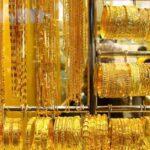The current account balance posted a USD 42.28bn deficit in January-July. So, the current account deficit (CAD) should total USD 214m in August-December to catch the Medium-Term Economic Program (OVP) forecast of USD 42.5bn for 2023.
That will happen if the economy contracts and FX rates climb. In this case, imports will stabilize and even rapidly decrease, and exports will jump. The policy rate will probably hover around 25%, or rate cuts will start to achieve that, which shouldn’t happen!
Considering efforts to prevent the hike in FX rates, the contraction in the economy, and work to maintain the growth, how can the forecast to hold the CAD at USD 214m in August-December be explained?
The management of the economy had to estimate the CAD for July correctly. The CAD hit USD 5.5bn in July, the second highest July data after 2013, when it reached USD 5.6bn. It won’t be that difficult to estimate CAD as the foreign trade statistics are clear.
If CAD totals USD 214m to bring the annual CAD to USD 42.5bn, that will be an unprecedented realization. Thus, the current account balance will post 99.5% of the total deficit in January-July, and it will record the remaining gap in August-December, in line with those values.
65% of the CAD was recorded in January-July, while the remaining was realized in August-December in 2014-2022, excluding 2018, 2019, and 2021.
The hike in the July reading mainly stemmed from the increase in foreign trade deficit, which rose from USD 9.3bn in July 2022 to USD 10.5bn in July 2023.
Travel revenues, which rose from USD 4.9bn in July 2022 to USD 5.3bn in July 2023, disappointed. Travel expenditures increased from USD 326m to USD 544m. The net revenue barely rose from USD 4.6bn to USD 4.8bn.
Inflow from FDI, portfolio, and other items totaled USD 3.9bn, USD 2.8bn of which was added to reserves. USD 4.4bn in net errors and omissions redressed the balance. FDI, which doesn’t flow into Turkey and seems not to do so, is the healthiest financing item.
There is almost nothing if we exclude real estate sales from this item.
Portfolio investments have just begun to flow.
The remainder is other items, which are mainly borrowing.








